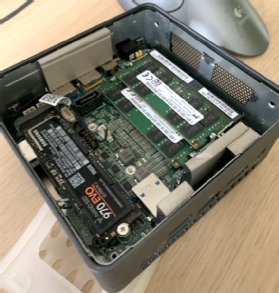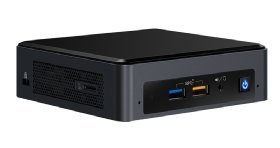
singkham - Fotolia
Run ESXi on NUC for a quiet but powerful at-home test lab
You can use Intel's NUC to set up a small but mighty at-home VMware test lab. Decide whether to nest your environments, and then learn how an NUC could benefit you.
Many IT administrators have a test lab at home. However, large test labs often make a lot of noise and consume an inordinate amount of power. Instead, you can run ESXi on NUC for a quiet and efficient at-home VMware test lab.
Although you can run a VMware environment in the cloud, configuring and using a cloud environment for a home test lab often costs more than it's worth. Instead, many admins prefer using Intel's Next Unit of Computing (NUC). The Intel NUC is a four-by-four inch mini-computer consisting of a motherboard, a cooling fan, a mounting plate and an external power supply.
NUCs can be costly, but the power and portability they provide might outweigh the high cost. Plus, an NUC is a one-time purchase, whereas subscribing to a cloud service adds up over time. You can set up and run an ESXi test platform on an NUC without the need for too much troubleshooting, although neither Intel nor VMware support this configuration.
Choosing an NUC
When you choose an NUC, you must first determine whether to nest your environments. Nesting an environment saves you money on hardware, as buying multiple NUCs could get expensive. 32 GB NUC models such as Bean Canyon and Skull Canyon can hold up to 64 GB of data with the help of a 32 GB RAM stick, which means that you can nest more easily. However, such RAM sticks have only just become commercially available, so they come at an additional cost.
You can create a silent, self-contained VMware cluster with just a non-volatile memory express (NVMe) disk and a 64 GB NUC. However, such an environment lacks redundancy, which means it won't work as a production environment.

If you decide not to nest, you can distribute RAM between multiple 32 GB NUCs, rather than putting as much RAM as possible into one NUC. As long as the CPU is the same generation as -- or newer than -- the other hosts in the cluster, you can add it without a problem.
Adding a CPU does, however, complicate your storage requirements, especially if you want to experiment with vSAN, which requires both mechanical disks and solid-state drives.
Regardless of whether you decide to nest your environments, when you choose an NUC, you won't be able to upgrade the CPU or GPU. For this reason, consider starting with an i5 or i7 model.
Networking with NUC
NUCs come with either one or two network ports. Using virtual LANs enables you to maximize the number of networks available. For test purposes, though, you should only need the two network connections.

If you've nested your test environment, don't forget to enable Permissive Mode on the outer network port. If disabled, the internal network can't reach the outside network.
With the help of NVMe disks, you can easily set up a Network File System in the NUC that only consumes 8 GB. You could also add a laptop hard disk to the NUC, although this doesn't perform as well as NVMe devices.
Installing and using ESXi
Because an NUC lacks a CD drive, you must install ESXi on NUC by other means. The best method is to create a bootable USB drive with ESXi image installed. You can use one of several tools to create a bootable image, including Rufus and Pendrive Linux. This method also helps you preserve storage space for VMs.
Another option is to hook the NUC to a monitor and keyboard post-configuration, but you can save space, simplify your test lab and add mobility by using the first method instead.
As long as you have turned on Secure Shell (SSH), you can easily create a remote console. Log in via SSH, open a BASH session and then use the command dcui to get a remote, text-based GUI interface for your console.






